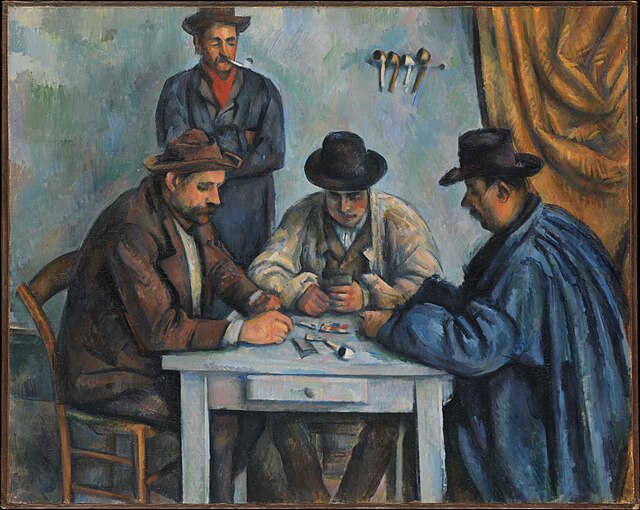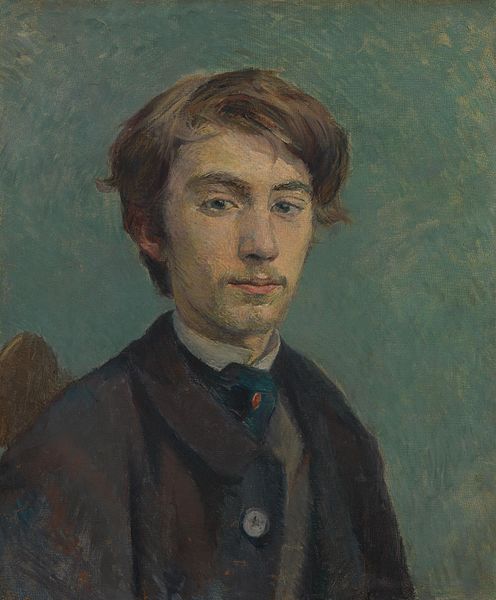Paul Cézanne was a French Post-Impressionist painter whose work introduced new modes of representation and influenced avant-garde artistic movements of the early 20th century. Cézanne is said to have formed the bridge between late 19th-century Impressionism and early 20th century Cubism.
Cézanne in 1899
The Overture to Tannhäuser: The Artist's Mother and Sister, 1868, Hermitage Museum, St. Petersburg
Spring, 1860, Petit Palais
Paul Alexis reading to Émile Zola, 1869–70, São Paulo Museum of Art
Post-Impressionism was a predominantly French art movement that developed roughly between 1886 and 1905, from the last Impressionist exhibition to the birth of Fauvism. Post-Impressionism emerged as a reaction against Impressionists' concern for the naturalistic depiction of light and colour. Its broad emphasis on abstract qualities or symbolic content means Post-Impressionism encompasses Les Nabis, Neo-Impressionism, Symbolism, Cloisonnism, the Pont-Aven School, and Synthetism, along with some later Impressionists' work. The movement's principal artists were Paul Cézanne, Paul Gauguin, Vincent van Gogh and Georges Seurat.
Henri Rousseau, The Centenary of Independence, 1892, Getty Center, Los Angeles
Paul Cézanne, Les Joueurs de cartes, Metropolitan Museum of Art, New York
Poster of the 1889 Exhibition of Paintings by the Impressionist and Synthetist Group, at Café des Arts, known as The Volpini Exhibition, 1889
Henri de Toulouse-Lautrec, Portrait of Émile Bernard, 1886, Tate Gallery London








